CSCW
-
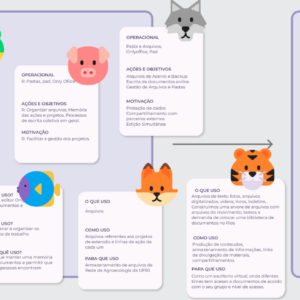 The final work of Isabela Luiza Molin de Siqueira in her Bachelor of Design studies at UTFPR is the redesign of a Computer Supported Collaborative Work platform called Rios, a tool used by social movements and non-profit organizations in Brazil that builds on their past experience of using Corais. Rios is developed by Eita Coop. […] - Jul 11, 2023
The final work of Isabela Luiza Molin de Siqueira in her Bachelor of Design studies at UTFPR is the redesign of a Computer Supported Collaborative Work platform called Rios, a tool used by social movements and non-profit organizations in Brazil that builds on their past experience of using Corais. Rios is developed by Eita Coop. […] - Jul 11, 2023 -
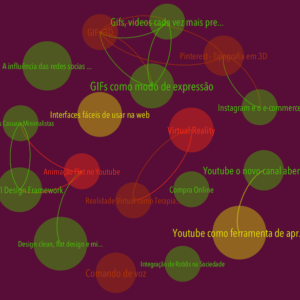 Graphs are mathematical structures that relate a sequence of entities that share an abstract connection between them. The connections are expressed through edges (links) that connect the related entities (nodes). Graphs are mostly used to find similar entities of different kinds through common linking patterns. Graph visualization is a common technique employed by social network […] - Feb 2, 2022
Graphs are mathematical structures that relate a sequence of entities that share an abstract connection between them. The connections are expressed through edges (links) that connect the related entities (nodes). Graphs are mostly used to find similar entities of different kinds through common linking patterns. Graph visualization is a common technique employed by social network […] - Feb 2, 2022 -
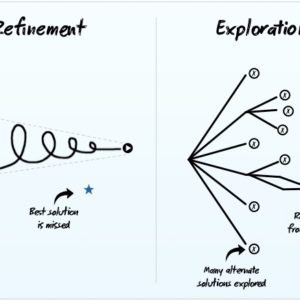
The alienation of design possibilities
The progressive contraction of design representations is synchronized with the alienation of design possibilities. Alienation means that some of the design possibilities are taken out of the design space and, therefore, never considered. These possibilities are put aside for being unacceptable, unthinkable, or unknown. This can happen by many reasons. In the socialization of the […] - Mar 16, 2015 -
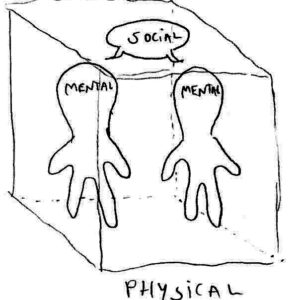
The socialization of the design space
The expansion of the design object from materials to experiences is synchronized with the socialization of the design space. The design space can be understood in three ways: Saying that, I believe there is a strong link between the physical, the social and the mental, one feeding the other. In that sense, the design space […] - Mar 16, 2015 -
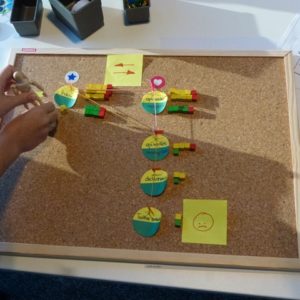
Low-tech to high-tech visualization
The World Usability Day was for the first time organized here at the University of Twente. In this event, I shared a practical output of my PhD research: a method to gather user data using low-tech materials. The method consists of collecting data through low-tech visualization and using the data to build high-tech visualizations, following […] - Nov 25, 2014 -

Visualization Tools for Self-Representation in Healthcare Design
Van Amstel, F.M.C; Hartman, T; Van der Voort, M; Dewulf, G.P.M.R. Visualization Tools for Self-Representation in Healthcare Design. In: Morello, E., Piga, B.E.A. (eds.). (2013). Envisioning Architecture: Design, Evaluation, Communication – Proceedings of the 11th conference of the European Architectural Envisioning Association, Milano, 25-28 September 2013. Roma: Edizioni Nuova Cultura. P 507-514 - Aug 8, 2013 -
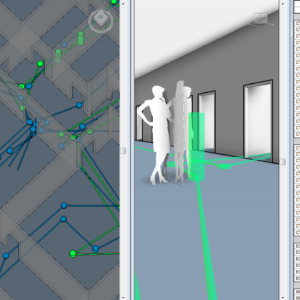
Walking paths parametric design tool (2012)
Walking Paths is an extension for Autodesk Revit, an industry standard tool for architectural design. The extension allows tracing the paths that patients, nurses, and other users should follow inside a facility. The application provides objective criteria to evaluate the work efficiency of a particular facility design. Walking_Paths [RFA] An Autodesk Revit parametric design family […] - Dec 13, 2012 -
Visualizations for Participatory Design
I made a video showing my PhD research progress so far. You can see how I video-record my workshops, analyze them, and develop new visualization tools based on my interpretation of what could be improved. - Dec 12, 2012 -
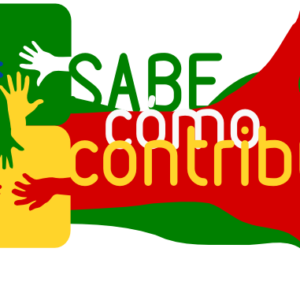
Social participation vocabulary (2012)
This was one of the projects that emerged in Corais Living Lab: a vocabulary to classify and share data across electronic public participation applications and websites. I did not organize the project but joined as a host in Corais. I really liked this project since it lays the foundation for a more democratic society in […] - Nov 24, 2012 -
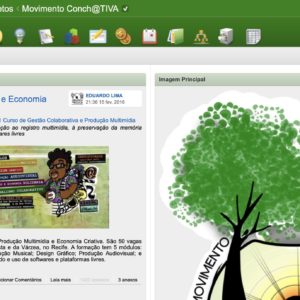 Corais was launched in 2011 as the open innovation platform of Faber-Ludens Interaction Design Institute. Since 2012, it became an independent cooperative platform for cultural producers in Brazil, maintained by Instituto Ambiente em Movimento and developed by Frederick van Amstel as an outreach activity of his academic work. An open design platform Development forked from […] - Nov 14, 2011
Corais was launched in 2011 as the open innovation platform of Faber-Ludens Interaction Design Institute. Since 2012, it became an independent cooperative platform for cultural producers in Brazil, maintained by Instituto Ambiente em Movimento and developed by Frederick van Amstel as an outreach activity of his academic work. An open design platform Development forked from […] - Nov 14, 2011 -
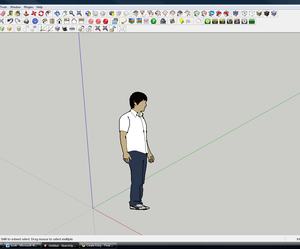
The uses of the human body in CAD
Yesterday I was in Germany for a collaborative meeting with some researchers working with computing and spation reasoning. I presented a poster outlining the challenges of my PhD research. Schloss Etelsen, the venue, couldn’t be better for reflecting about space abstract modeling. Look at the site: Coincidence or not, the 19th century castle had been […] - Jul 1, 2011